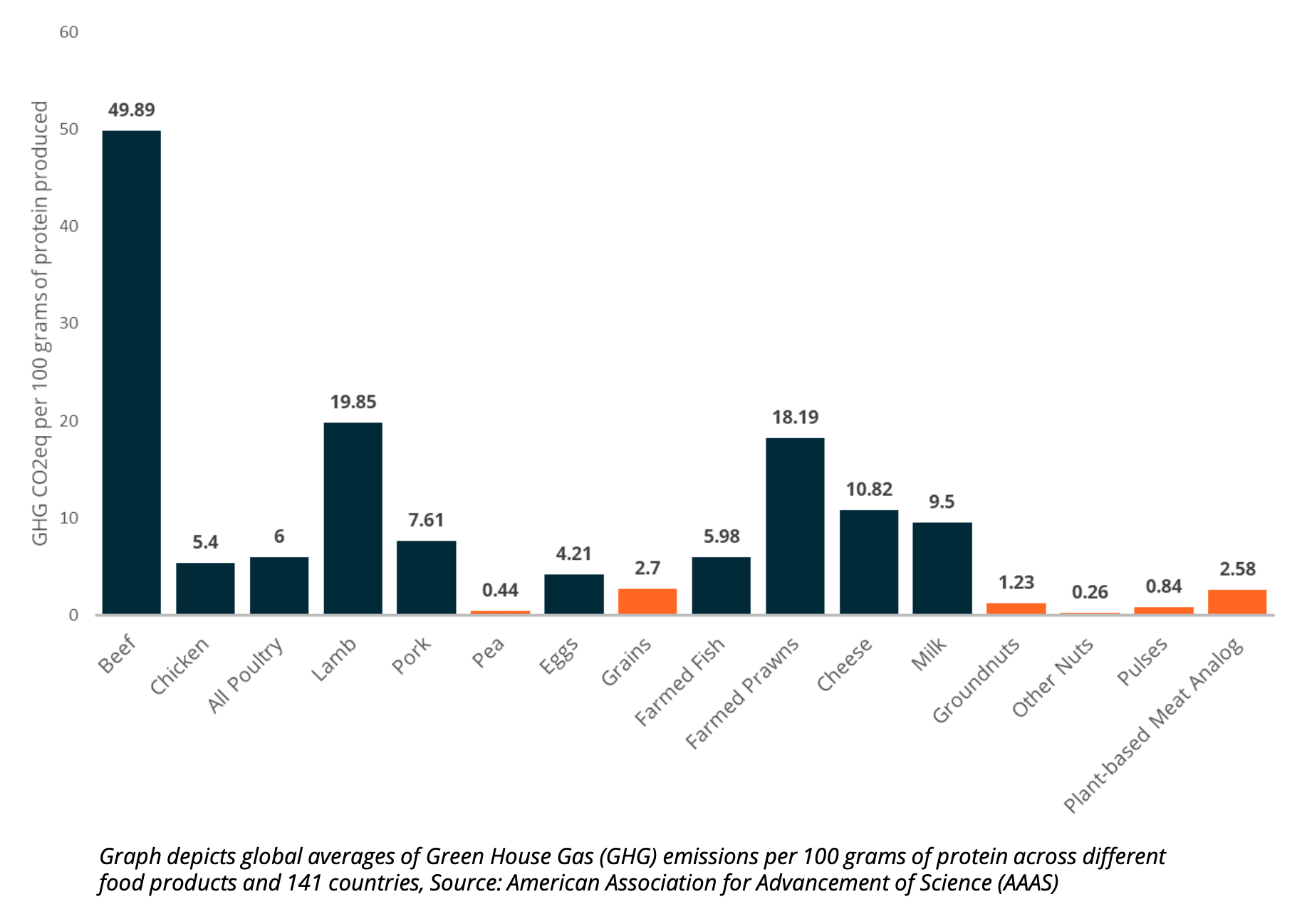Executive Summary: Plant-based Protein Ingredients & Manufacturing
With improvements in manufacturing and raw materials, plant-based protein can ease livestock’s environmental burden
- Plant-based protein products represent a sustainable pathway to meet rising protein demand, but market contractions cast doubt on the category’s future
- Product life cycle assessments indicate that, at the lower end, plant-based substitutes offer a 93% reduction in land use-related environmental impacts compared to conventional beef burger patties; as well as an 85% reduction in GHG emissions (Beyond Meat, Impossible Foods, Kellogg’s)
- While several innovators have gained global brand recognition and reached multibillion dollar valuations, consumer demand is flatlining
- Plant-based meat end-pricing may be too high at 43% higher than animal derived counterparts (Good Food Institute)
- Consumers generally consider taste and texture of plant-based analogs as inferior to animal-derived protein, particularly for beef and seafood substitutes
- Plant-based meat end-pricing may be too high at 43% higher than animal derived counterparts (Good Food Institute)
- Innovations emerging to address these issues include:
- Selective breeding / genetic engineering of raw plant ingredients (e.g., Benson Hill, NuCicer)
- Hybridization with cell-cultured / precision fermented products (e.g., Mission Barns, Nourish Ingredients)
- Advances in texturization and processing incl. improved extrusion capabilities, fiber spinning, and 3D printing (eg, NovaMeat, Tender)
- Selective breeding / genetic engineering of raw plant ingredients (e.g., Benson Hill, NuCicer)
- Future market growth is reliant on:
- Some level of acceptance of gene-editing technologies to develop protein-optimized crop varieties, as well as exploration of alternative crops
- Driving down manufacturing costs to maintain price parity with animal products
- Some level of acceptance of gene-editing technologies to develop protein-optimized crop varieties, as well as exploration of alternative crops
GHG Emissions (CO2eq) per 100 Grams of Protein Produced









